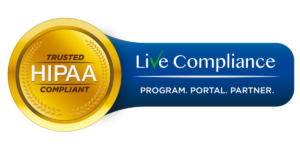The ever-evolving landscape of healthcare is witnessing a digital metamorphosis, with remote patient monitoring (RPM) emerging as a transformative force at the forefront. This revolutionary technology is reshaping the very essence of hospital operations, influencing patient care dynamics and resource allocation strategies. In this exploration, we delve into the profound impact of RPM on hospitals, unraveling its multifaceted benefits, addressing challenges, and envisioning an exciting future with unprecedented potential.
Enhanced Patient Care and Outcomes:
At the heart of RPM lies the promise of enhanced patient care and improved outcomes. The continuous flow of data from wearable devices and sensors, such as blood pressure cuffs and glucometers, empowers healthcare professionals with near real-time insights into the health status of patients. This empowerment facilitates proactive interventions, preventing complications, optimizing treatment plans, and tailoring care to individual needs.
One of the key advantages is the early intervention made possible by RPM. With the ability to detect and address health issues in their nascent stages, clinicians can significantly impact patient outcomes. This approach not only ensures the well-being of patients but also contributes to the overall efficiency of healthcare delivery.
Reduced Readmissions:
Studies underscore the significant role RPM plays in reducing hospital readmissions, especially for chronic conditions like heart failure and chronic obstructive pulmonary disease (COPD). By proactively addressing potential issues before they escalate, RPM proves instrumental in keeping patients healthier and out of hospital beds. This reduction in readmissions not only enhances the quality of patient care but also contributes to the cost-effectiveness of healthcare delivery.
Improved Patient Engagement:
RPM fosters a collaborative approach to healthcare by empowering patients to actively participate in their own care. Providing patients with valuable insights into their health data cultivates a sense of control and adherence to treatment plans. This active engagement between healthcare providers and patients lays the foundation for better long-term outcomes and a more patient-centric healthcare system.
Boosting Operational Efficiency and Cost Savings:
The integration of RPM into hospital workflows brings about a paradigm shift in operational efficiency and cost savings. The advantages are multifaceted, starting with the reduction of hospital stays. Early detection and remote management of health issues allow for shorter hospital stays, freeing up beds for critical cases and optimizing resource utilization.
RPM seamlessly integrates with electronic health records (EHRs), automating data collection and streamlining workflows for healthcare professionals. This integration not only saves time but also reduces administrative burden, allowing healthcare providers to focus on delivering quality care to their patients.
Moreover, the financial implications are substantial. The combined benefits of reduced readmissions, shorter hospital stays, and improved preventive care translate into significant cost savings for hospitals and healthcare systems. According to a 2020 report by McKinsey & Company, RPM could generate up to $300 billion in annual savings for the US healthcare system by 2025.
Challenges and the Road Ahead:
While the benefits of RPM are compelling, challenges exist on the path to its widespread adoption. Technology adoption and integration into existing hospital infrastructure require substantial investment and adaptation. Healthcare professionals need adequate training and support to harness the full potential of RPM effectively.
Data security and privacy concerns must also be addressed with robust cybersecurity measures and clear data governance policies. Building trust with patients is crucial for widespread adoption, emphasizing the need for transparent communication regarding data handling and security protocols.
Reimbursement models for RPM services are still evolving, creating uncertainty for hospitals and healthcare providers. Clearer policies and incentives are needed to drive wider adoption and ensure the financial sustainability of RPM initiatives.
The Future of RPM: A Promising Horizon:
Despite the challenges, the future of RPM in hospitals appears promising. Advancements in artificial intelligence (AI) and machine learning are set to further enhance data analysis and predictive capabilities, enabling even more proactive and personalized care. Integration with telehealth and virtual care platforms will expand access to care, particularly in rural and underserved areas.
In conclusion, RPM is not merely a technological trend but a paradigm shift in healthcare delivery. By embracing its potential, hospitals can revolutionize patient care, improve operational efficiency, and contribute to a more sustainable and cost-effective healthcare system. The time for transformation is now, and RPM stands as the key to unlocking a healthier future for hospitals and patients alike.
